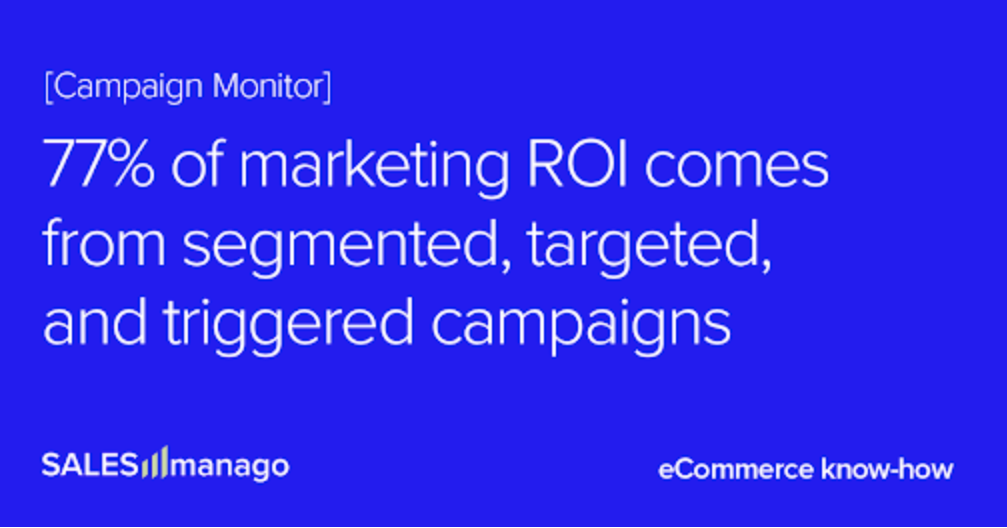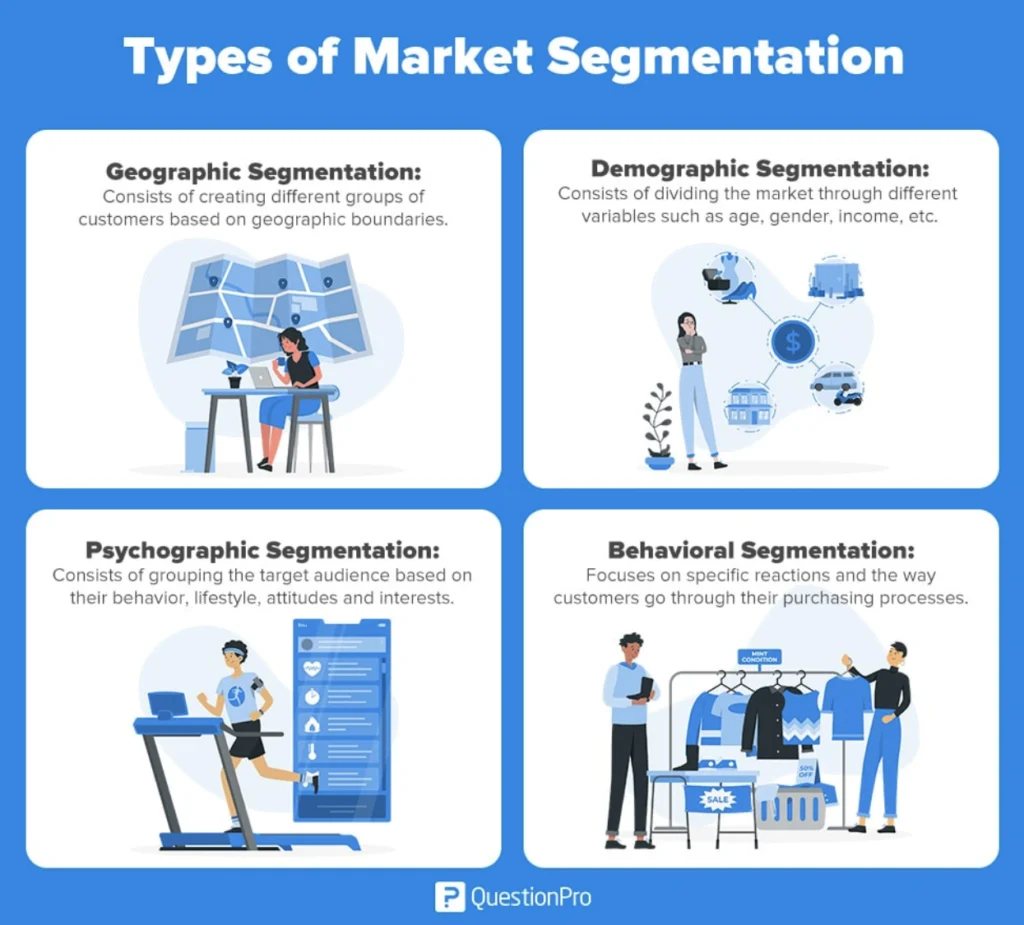How to Create an Effective Marketing Segmentation Strategy
A marketing segmentation strategy allows you to customize your campaigns for better results. For example, beer commercials during grilling season look vastly different than those reaching football fans in February. Each one is customized to a unique audience group and emphasizes the greatest selling points of that group.
Learn how to build a marketing segmentation strategy to help personalize your marketing efforts.
Key Takeaways:
- Marketing segmentation is dividing up an audience into groups defined by unifying characteristics.
- You can perform segmentation by demographics, psychographics, behaviors, or geographics.
- Divide your segments by factors that directly impact purchase behavior.
- Continually test and adjust your groups as customer behaviors and needs change.
What Is a Marketing Segmentation Strategy?
A marketing segmentation strategy separates your market audience into groups based on similar characteristics or needs so you can customize your approach. Targeted campaigns bring in 77% of marketing ROI.

Image from Salesmanago
For example, B2B marketers can segment their audience by the title of primary decision-makers so the marketers can create content centered around each decision-maker’s pain points. In contrast, B2C marketers might segment the audience by demographics as a parent will have very different motivating factors when purchasing consumer products than a single adult with no dependents.
Types of Marketing Segmentation
There are five types of segmentation you can use in your strategy:
- Demographic (B2C): Group your markets by age, gender, education, family status, job, title, or income
- Firmographic (B2B): Group businesses by industry, title, or budget.
- Psychographic: Group your markets by beliefs, values, lifestyle choices, or personalities.
- Behavioral: Group your market by buying patterns, spending, past interactions, and stage in the buyer’s journey.
- Geographic: Group your market by location, like zip code, country, or type of development
Often, methods of segmentation will overlap for more effective targeting. For example, a computer manufacturer might segment by demographics and behaviors, like reaching college students who purchased their hardware in the past by offering discounts on upgrades or trade-in deals before school.

Image from QuestionPro
8 Tips for Creating a Marketing Segmentation Strategy
Follow these eight tips to segment and market to each group of customers effectively.
1. Understand Your Objectives
Why do you want to segment your audience? To make the most of your investment in marketing segmentation, you want to ensure it has a purpose and will help your business grow. If you can achieve the same goals without creating segments, you don’t need to spend the time and resources building groups.
However, segmentation has many benefits and is worth using in most marketing strategies. For instance, segmentation can help you identify high-value customers so you can invest more in those campaigns. Segmentation is also vital to a B2B account-based marketing strategy that requires personalized marketing campaigns.
2. Define Your Market
Before grouping your market into smaller segments, you need to define who your market includes. The best place to start is your current customers. You’ll discover commonalities between your audience by analyzing who purchases your products and their behaviors throughout their customer lifecycle.
However, don’t stop with your current customers, as that could limit your growth. Also, look at who you want to reach by examining your product and considering how someone might use it. Then, create fictional personas around those buyers.
A third place to look is your competition. What type of customers does your competition attract? Of course, you will have a similar audience if you sell similar products. However, analyzing your competition also alerts you to parts of the market they aren’t reaching that you can target through segmentation.
3. Choose Your Segments
Now that you understand who you’re targeting, you can start categorizing them by similar characteristics. You can choose as many or as few segments as your business can handle. However, if this is your first time working with market segments, you might want to start with two or three and add more segments as you learn what works best.
When choosing your segments, consider how the defining characteristics of each group directly impact their purchase behavior. For example, a clothing brand would benefit by including age and gender in their segments as those factors directly influence their buyer’s purchase behavior. However, a software company would see better results when segmenting by firmographic factors than gender or age because firmographics have a greater impact on SaaS buying behaviors.
4. Research Each Segment
With your market divided into segments, you can dive deeper into the groups to learn what drives their purchase decisions. Are they motivated by emotions or research? What main challenges do they face? What are the most significant roadblocks that keep them from buying your products?
Sending out surveys and performing market research are effective ways of gathering the insights you need to understand each segment.
As you research your segments, you might discover similar segments and merge them. However, you may also realize other segments aren’t relevant and need to change those groups.
5. Test Your Segments
Before fully investing in the segments you created, perform tests on smaller portions of your groups. Then, as you send out test campaigns, analyze the results to see which groups respond well and which don’t. This can tell you whether you need to continue researching and adjusting the segments or whether you created a strong segment with relevant characteristics and needs.
6. Personalize Your Strategy
For your market segmentation strategy to work, you need to adjust your marketing strategy to match each segment. For example, you can put each segment into individual email groups. Then, when you send out email campaigns, you will adjust the message for each group.
7. Measure Your Return
Your return on investment will help you know which segments are responding to your message. For example, if a segment isn’t purchasing products, the buyers in the group might not have purchase power. They might also not have an immediate need for your product.
While 81% of executives agree that segmentation is critical for boosting profits, those with highly effective campaigns saw 10% higher earnings than those with ineffective segmentation. Continually monitoring and measuring helps you optimize the efficiency of your strategy.
8. Keep Adjusting the Strategy
Your segmentation strategy isn’t evergreen. Instead, it’s rapidly changing as your customers’ needs and behaviors change. For example, COVID-19 shifted many customer behaviors and put buyers into different segments. Holidays or seasonal changes might also cause your segments to change and your buyers to have new needs.
Setting aside an annual or quarterly period for reevaluating your segments will ensure they remain relevant.
Personalize Your Marketing through Segmentation
Televerde can help you build an effective marketing segmentation strategy. Our marketing and sales experts bring the latest tools and trends in segmentation to the table, where we create a customized approach for your business and customers.
Contact us to learn more about our customer lifecycle solutions.


